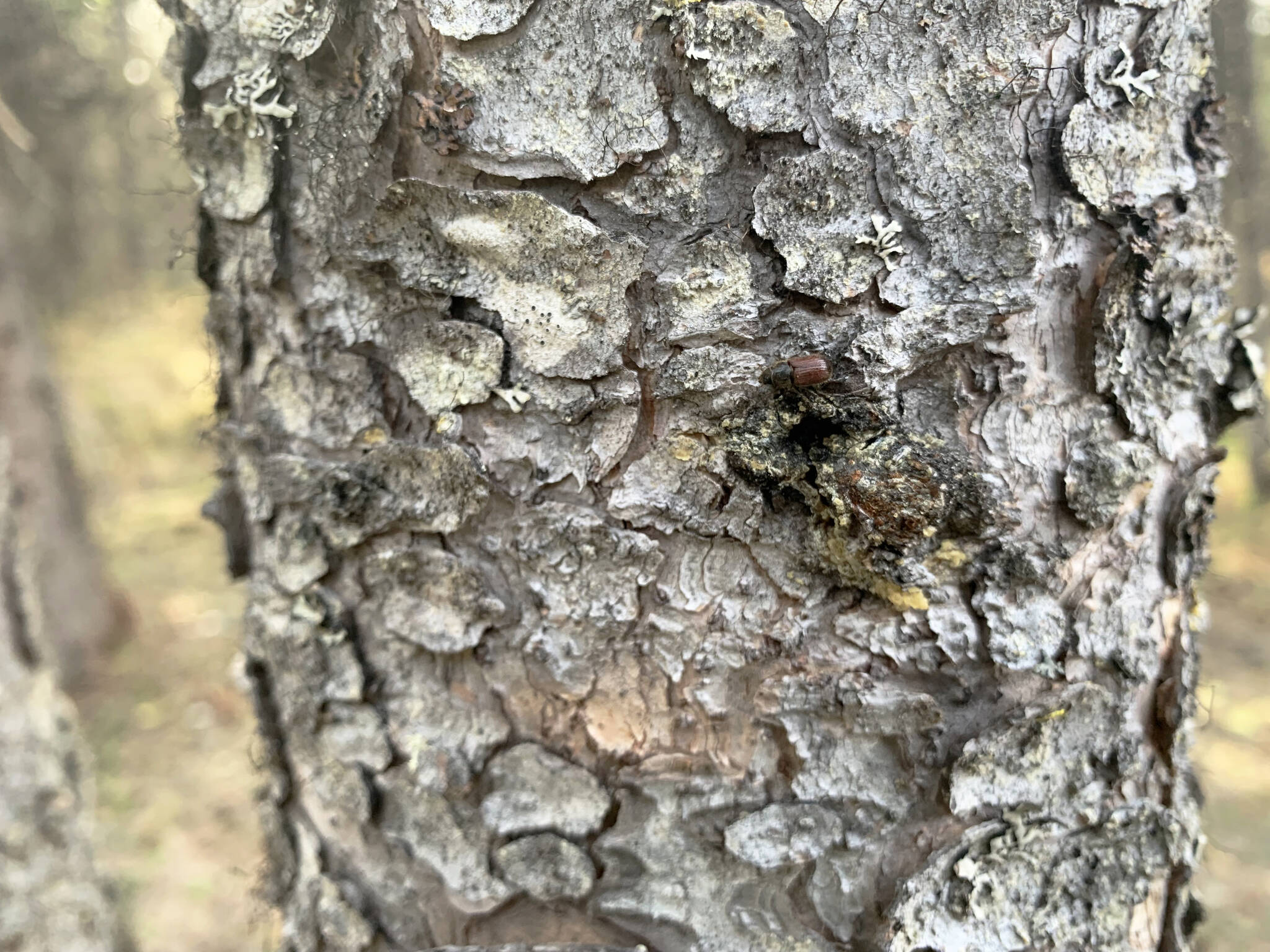It’s summertime, which means Southcentral Alaska’s spruce bark beetles are on the move. During the so-called “beetle flight period,” which runs from mid-May to mid-July, the beetles are “actively seeking new trees,” the Alaska Division of Forestry said in a seasonal reminder.
More than 1.6 million acres of land in Southcentral Alaska have experienced spruce bark beetle infestation, including 21,000 acres of forested land that is managed by the Kenai Peninsula Borough, according to borough ordinance. The dead and dying white and Lutz Spruce trees affected by the beetles are hazardous; they’re prone to falling over and are especially susceptible to fires.
Municipalities across the peninsula are working to combat the insects as the region’s current outbreak rages. The City of Soldotna received more than $150,000 to take down dangerous trees on city property and the City of Kenai last week opened a slash disposal site in the city in addition to taking down hazardous trees.
The Kenai Peninsula Borough Assembly approved last month the emergency harvest of beetle-killed trees on borough land. That vote was the first step in a larger effort by the borough’s Land Management Division to turn the outbreak into an opportunity to harvest timber and develop a forest management plan for the borough.
The Alaska Division of Forestry urges residents to avoid harvesting live spruce or creating fresh spruce slash during the beetles’ flight period, unless that the logs and slash can be processed “promptly.”
“Once spruce beetles attack a tree, nothing can be done to reverse the impact of the beetle attacks on the tree,” the agency said.
Spruce bark beetles kill trees by boring through bark and feeding in a tree’s phloem, according to the National Park Service. Phloem is the innermost layer of the bark and transports compounds produced through photosynthesis to other parts of the tree. By disrupting that process, beetles are able to starve the tree and cause it to die. That death is accelerated by a fungus brought by the beetles that prevents the movement of water through the tree.
A common indicator of beetle presence is boring dust, similar to sawdust, which collects at the base of the infected tree and in bark crevices. The dust is pushed out of holes in the bark where beetles enter and clear tunnels under the bark. Pitch tubes, or red globs on the surface of the tree bark, are seen where the tree has tried to push the beetles out.
The Alaska Division of Forestry offers guidance on their website about the best conditions for wood at each stage of infection.
Reach reporter Ashlyn O’Hara at ashlyn.ohara@peninsulaclarion.com.


